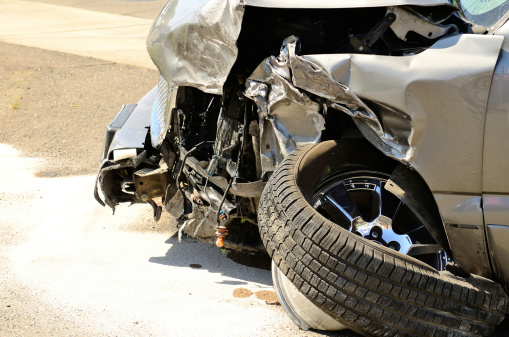Cars and Drivers
Will Buyers Abandon Small Cars Because of Crash Dangers?
Published:
Small cars have several advantages for consumers. First among these is fuel efficiency. Second is that most small cars cost less than larger ones. These may be more than offset by the fact that small vehicles often are not safe to drive. Although the problem makes sense, it was driven home by recent research. And the research results may undermine sales in the important segment, robbing the industry of momentum.
The Insurance Institute for Highway Safety (IIHS) announced:
Only 1 minicar out of 11 tested achieves an acceptable rating in the Insurance Institute for Highway Safety’s small overlap front crash test, making these tiny vehicles the worst performing group of any evaluated so far.
General Motors Co.’s (NYSE: GM) Chevrolet Spark made the cut. The Honda Motor Co. Ltd. (NYSE: HMC) Fit, Toyota Motor Corp. (NYSE: TM) Yaris and Prius C, Ford Motor Co. (NYSE: F) Fiesta, Kia Rio, Hyundai Accent, Fiat 500, Mazda 2, Mitsubishi Mirage and Nissan Versa sedan did not.
Among the factors these cars have in common is price. The Fiesta sells for barely more than $14,000. The Mazda 2 has a base price under $15,000. The Yaris also sells for less than $15,000. The other “dangerous” cars on the IIHS list are priced similarly.
The 11 cars also get extraordinary gas mileage. The Versa gets 40 miles per gallon (mpg) on the highway. The Mirage gets as much as 44 mpg. The Fiat 500 lists its highway mpg at 40 as well. Each of the numbers is extraordinarily low. Low enough — recently — that when married with price, some buyers find them irresistible.
The segment of the auto buyer market to which these cars appeal is likely younger buyers who often do not have the money to afford expensive cars or high gasoline costs. The industry needs these buyers. The University of Michigan’s Transportation Research Institute recently reported that the people most likely to buy cars in general are 55 to 64 years old. This eclipsed the 35-to-44 year old group, which used to lead the list. Authors of a Bloomberg evaluation of the study reported:
Indeed, young people don’t seem that interested in driving. Just 79 percent of people between 20 and 24 had a driver’s license in 2011, compared with 92 percent in 1983, according to the Michigan study.
Conversely, the oldest boomers are trooping down to the Department of Motor Vehicles in growing numbers to remain licensed to drive. Almost 93 percent of those age 60 to 64 had a driver’s license in 2011, up from 84 percent in 1983.
Car companies can ill afford trouble that would undermine sales of cars that appeal to the youth segment of the market. As older buyers reach the end of their driving years, someone has to replace them, or car companies have a hurdle they cannot overcome.
Start by taking a quick retirement quiz from SmartAsset that will match you with up to 3 financial advisors that serve your area and beyond in 5 minutes, or less.
Each advisor has been vetted by SmartAsset and is held to a fiduciary standard to act in your best interests.
Here’s how it works:
1. Answer SmartAsset advisor match quiz
2. Review your pre-screened matches at your leisure. Check out the advisors’ profiles.
3. Speak with advisors at no cost to you. Have an introductory call on the phone or introduction in person and choose whom to work with in the future
Thank you for reading! Have some feedback for us?
Contact the 24/7 Wall St. editorial team.